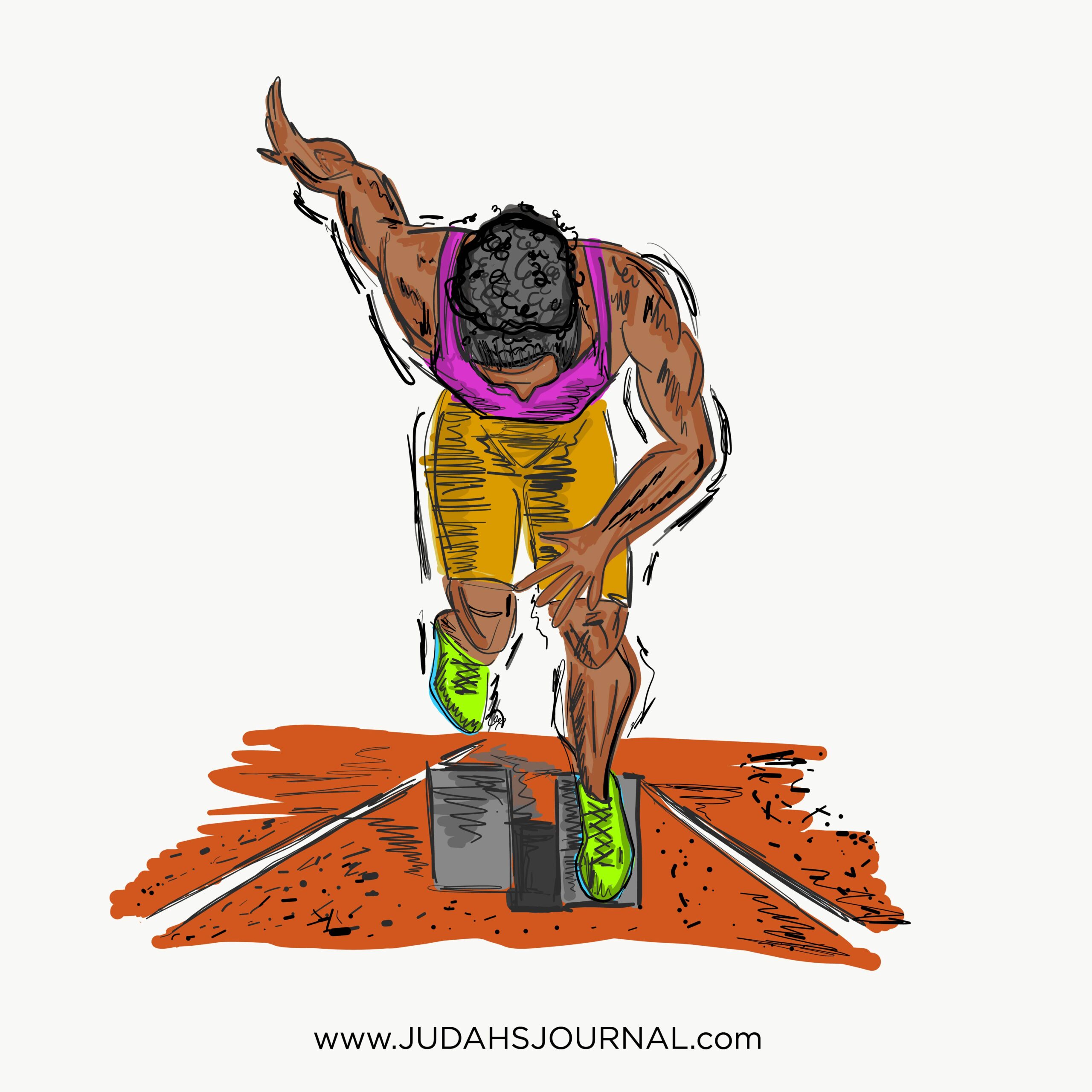
26 Jan A Strong Start: Entering the Blocks (Pt.2)
Today, we are tackling part 2 of our ‘Strong Start’ series, and we are just going to jump right in.
We have been preparing; we are becoming stronger and better by the day. We have done the work, and now it is race day. It is time for us to show the world what we have been ‘practicing for’ or what sprinters like to call “entering the blocks.”
The thing is — race day is made up of a mix of emotions. From thoughts of “Dear God. What have I done?” to “Girl. I’ve got this!” And because there are plenty of variables that you cannot control when you are called to the line, you have got to focus on what you can control: how you enter the blocks, the block positioning, the body positioning, and where your eyes focus when the gun goes off.
Sprinting is a highly technical activity that demands exceptionally high levels of concentration. Just as there was an approach to how a runner approaches practice, there is also a pattern of how they ‘enter the blocks.’
NOTE: Starting blocks are a device used in the sport of track and field by sprint athletes to brace their feet against at the start of a race, so they do not slip as they stride forwards at the sound of the starter’s pistol.
ENTERING THE BLOCKS
Sprinters must establish a routine for how they enter the blocks. The reason for this is simple. When the official calls you to the line, it is time to focus and go into what runner Michael Johnson calls “the Danger Zone.” The shorter the distance of the race you are competing in, the less room for your errors.
When you are given the opportunity to accomplish a goal, to change your life (and the lives of those around you), you are, in fact, in the “danger zone.” The enemy does not want you there.
Entering the blocks can be broken into two steps: block positioning and body positioning.
Block positioning is vital because blocks hold the sprinters’ feet and position them to accelerate. Before a race, a sprinter must make sure their blocks are aligned and fitted to their body well.
We know’ to position’ something means to place something or someone in a place where said person or thing is should be. So, I ask you:
What are you using for your support?
What knowledge have you armed yourself with?
What networks have you connected to?
What support systems or disciplines have you created to sustain you when you catapult yourself into your goals, calling, and destinies?
Body positioning in track and field is crucial to the race because it sets your posture and point of focus.
When the whistle is blown, the sprinter gets in front of the block, down on all fours, and back onto the block. Sprinters do not make the mistake of raising their heads; they look down at their hands and the ground, not at the track ahead of them or to the people on either of their sides.
So, now I ask: What posture are you taking as you prepare to tackle your goals?
Are you in the posture of a victorious person? Or are you in the posture of a defeated woman? Perhaps, one that is afraid?
Sis, our posture matters.
Numerous psychological studies have shown that people that enter an interview or meeting in a “power pose” or superman stance often feel powerful. When a guy meets a woman he wants to impress, he stands up straight, shoulders back, and gut sucked in. When someone wants to propose, they get down on one knee.
The same goes for how we approach our goals. We need to have the appropriate mental posture when going after our goals: our attitudes, our thinking, and even our self-talk. Proverbs 4:23 mentions the importance of renewing the mind, “Above all else, guard your heart, for everything you do flows from it.” If you find yourself struggling with toxic thoughts, meditate, affirm the Word regularly, or seek counseling.
And then, finally, there is your point of focus. The truth is that where your eyes go – your focus goes,
I once took a defensive driving class, and in it, they would say that when you are faced with an impending accident, you need to “look in the location that you want the car to go, not at the thing that you’re trying to avoid hitting.”
Read that again.
How often do we have our gaze at the finish line, and then we foul the start of a race? A sprinter knows that he or she is in the danger zone, and their focus needs to be down only on the steps in front of them.
The blocks’ significance is how powerful it is for you to position yourself in the perfect posture to be connected to or touch the right things and be ready when the gun fires, to be catapulted because those first three steps are so vitally important to your journey.
Women of Judah, there is nothing, NOTHING like running your race. But — before you can catch your stride, you need to create your support (your blocks), your need to position yourself for success, and focus on the start before you start focusing on the finish.

Sorry, the comment form is closed at this time.